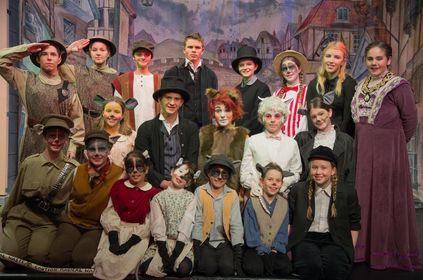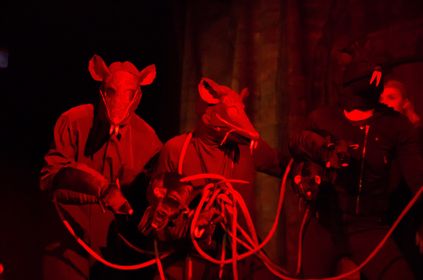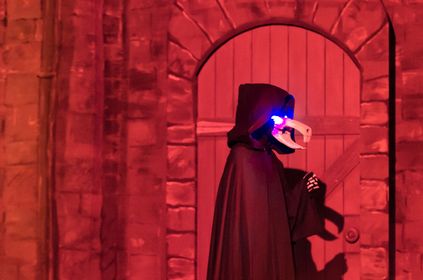#Pratchat40 – The King and the Hole of the King
Comedian Richard McKenzie returns to get a bit gothic as he, Liz and Ben head to Überwald to discuss The Fifth Elephant in the room…by which we mean the twenty-fourth Discworld novel, published in 1999.
As Ankh-Morpork and its neighbours embrace modern semaphore technology, trouble is brewing among the dwarfs. A new Low King is soon to be crowned in Überwald – and not everyone is happy with the choice. The Patrician selects just the right “diplomat” for the job: the Duke of Ankh, Sir Samuel Vimes. He reluctantly agrees to face vampires, werewolves, Igors and dwarf politics in a place where his Watch badge holds no sway. He’s not going alone – though Sergeant Detritus (a troll) and Corporal Cheery Littlebottom (the first openly female dwarf) are not likely to be popular with the traditional dwarfs of Überwald. Luckily he also has diplomatic attaché Inigo Skimmer, and his strongest ally: his wife, the Lady Sybil Ramkin…
After exploring one vampire family from Überwald in Carpe Jugulum, Pratchett takes Sam Vimes out of his comfort zone and into the lands of the fabled fifth elephant, while making far fewer references to the Luc Besson film than you’d expect. With Carrot and Angua off on a B-plot, and Colon, Nobby and the rest of the Watch left behind in the C-plot, it’s also a chance for background characters Detritus, Cheery and Lady Sybil to shine. The novel also expands on the culture of vampires, werewolves, Igors and especially dwarfs, building the foundations for many future novels.
It’s a great read for a Discworld fan – but would The Fifth Elephant make a confusing introduction to the series? Was this Sybil’s finest hour, or were you left wanting more of her? Does a beloved character do a murder? If so, is it okay? And did Carrot really need to be there, or was he just a Gaspode enabling device? Tell us by using the hashtag #Pratchat40 on social media to join the conversation!
Podcast: Play in new window | Download (Duration: 2:29:06 — 68.7MB)
Returning guest Richard McKenzie is hopefully back to hosting trivia twice a week, on Thursdays and Sundays, at the Cornish Arms on Sydney Road in Brunswick, Melbourne. He and Ben devised the Dungeons & Dragons themed impro comedy show Dungeon Crawl, which now usually appears at Melbourne games expo PAX Aus. Richard also appears in the lineup of ensemble comedy shows The Anarchist Guild Social Committee and Secondhand Cinema Club.
A a quick reminder that you can order Collisions, the short story anthology from Liminal Magazine, from your local bookshop! It includes Liz’s story “The Voyeur” and fifteen others. The link also has some online sources if you need ’em.
Next time we’re reading something very different: Pratchett’s standalone, non-Discworld young adult novel from 2008, Nation! We’ll be joined by educator Charlotte Pezaro. Send us your questions using the hashtag #Pratchat41, or get them in via email: chat@pratchatpodcast.com
You’ll find the full notes and errata for this episode on our web site.
Want to help us get to the end of our six(ish) year mission and read every Pratchett book – and more? You can support us with a tip, or a subscription for as little as $2 a month, and that’s cuttin’ our own throats! See our Support Us page for details.



